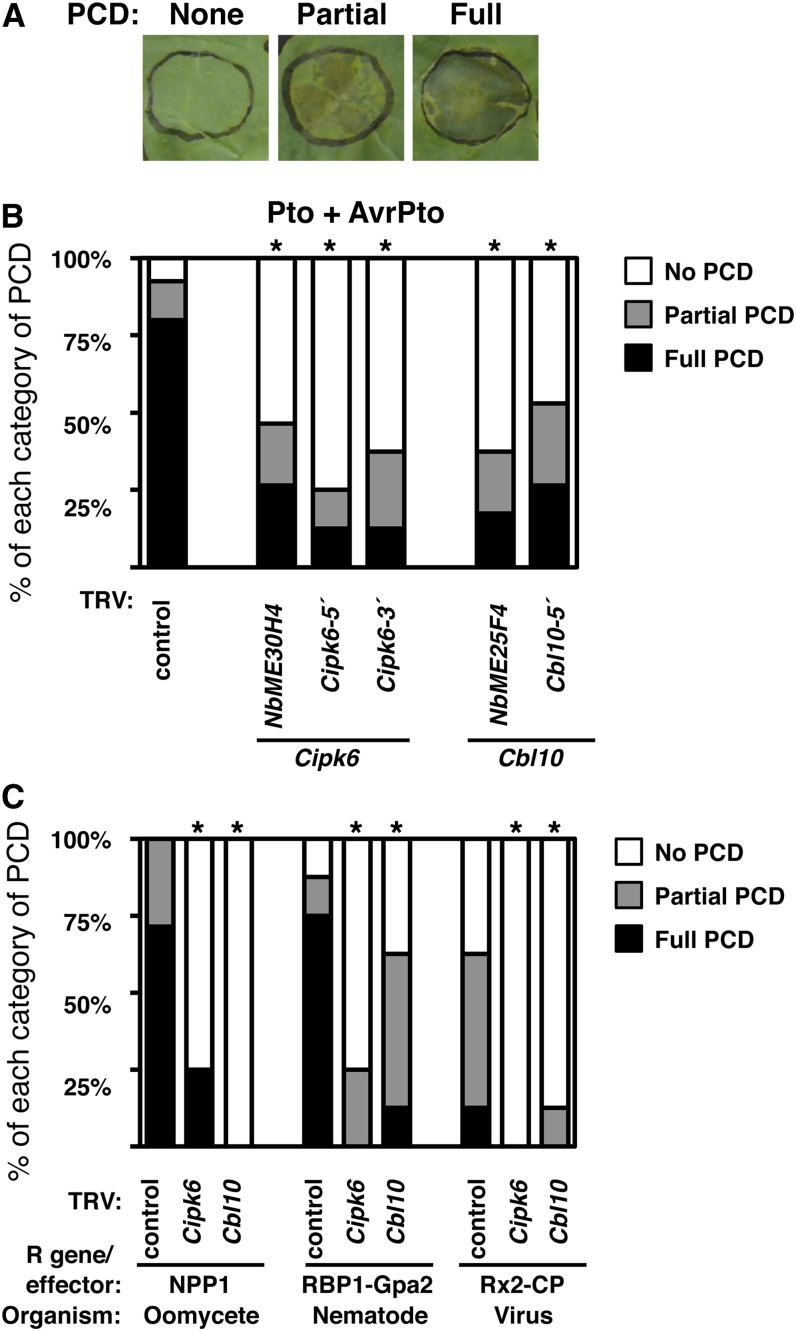Figure 2.
Cbl10 or Cipk6 Silencing in N. benthamiana Compromises PCD Mediated by Different R Gene/Effector Gene Interactions.
(A) PCD was monitored visually and classified according to its extent: full PCD, >80%; partial PCD, 20 to 80%; no PCD, <10%.
(B) PCD mediated by Pto is greatly reduced in Cipk6- or Cbl10-silenced N. benthamiana leaves using the originally identified fragments in the screen or additional silencing constructions for Cipk6 (TRV-Nb-ME30H4, TRV-Sl-Cipk6-5′, and TRV-Sl-Cipk6-3′) and for Cbl10 (TRV-Nb-ME25F4 and TRV-Sl-Cbl10-5′) compared with TRV control leaves agroinfiltrated with Pto or AvrPto. For each silencing construction, we used five plants with two leaves infiltrated per plant. The experiment was repeated six times with similar results.
(C) Suppression of PCD elicited by other R genes/elicitors is also observed in Cbl10- or Cipk6-silenced N. benthamiana leaves compared with TRV control leaves after agroinfiltration of NPP1, RBP-1/Gpa2, and Rx2/CP. Four plants per line were tested, and PCD was observed 5 d later for NPP1, 7 d later for RBP-1/Gpa2, and 6 d later for Rx2/CP. TRV-Nb-ME25F4 and TRV-Nb-ME30H4 were used for silencing. Asterisks indicate significant reduction in PCD (Student’s t test; P < 0.05).
[See online article for color version of this figure.]

